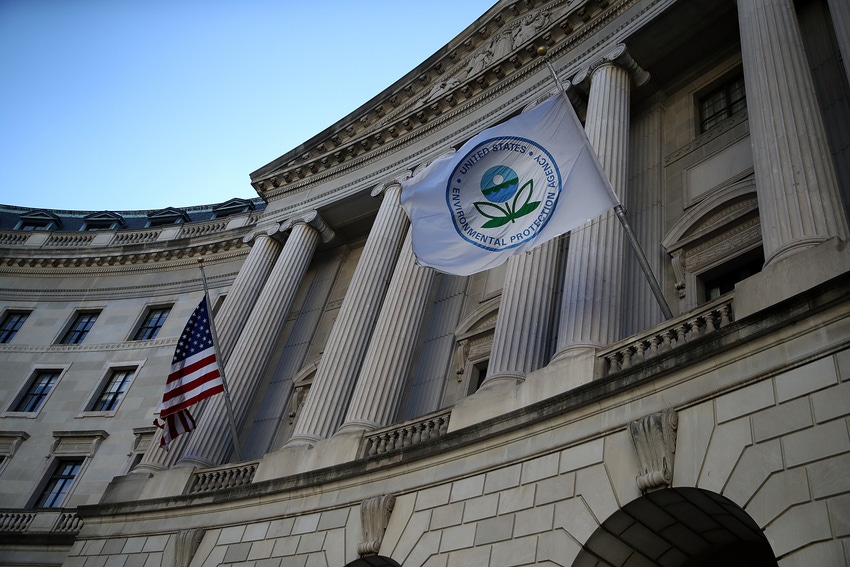Science-based decision reverses 2016 court ruling vacating registration due to potential impact on bees.

The U.S. Environmental Protection Agency issued a long-term approval for the insecticide sulfoxaflor— a tool to control challenging pests with fewer environmental impacts. After conducting an extensive risk analysis, including the review of one of the agency’s largest data sets on the effects of a pesticide on bees, EPA approved the use of sulfoxaflor on alfalfa, corn, cacao, grains (millet, oats), pineapple, sorghum, teff, teosinte, tree plantations, citrus, cotton, cucurbits (squash, cucumbers, watermelons, some gourds), soybeans and strawberries.
In 2016, following a 2015 decision by the Ninth Circuit Court of Appeals vacating the registration of sulfoxaflor, citing inadequate data on the effects on bees, EPA re-evaluated the data and approved registrations that did not include crops that attract bees. The 2016 registration allowed fewer uses than the initial registration and included additional interim restrictions on application while new data on bees were being obtained. The latest action -- adding new uses, restoring previous uses and removing certain application restrictions -- is backed by substantial data supporting the use of sulfoxaflor.
Sulfoxaflor is an important and highly effective tool for growers that targets difficult pests such as sugarcane aphids and tarnished plant bugs, also known as lygus. These pests can damage crops and cause significant economic loss. Additionally, there are few viable alternatives to sulfoxaflor for these pests. In many cases, alternative insecticides may be effective only if applied repeatedly or in a tank mix, whereas sulfoxaflor often requires fewer applications, resulting in less risk to aquatic and terrestrial wildlife.
“EPA is providing long-term certainty for U.S. growers to use an important tool to protect crops and avoid potentially significant economic losses while maintaining strong protection for pollinators,” said Alexandra Dapolito Dunn, assistant administrator for EPA’s Office of Chemical Safety & Pollution Prevention. Dunn added that the decision shows the agency’s commitment to making decisions that are based on sound science.
“Today’s action ensures reduced risk to pollinators and the environment through crop-specific label restrictions and provides farmers with a critical pest management tool needed to protect crops from invasive sugarcane aphids, plant bugs and other pests,” Jim Gulliford, regional administrator for EPA Region 7, said. “Here in Region 7, the registration of sulfoxaflor will help prevent significant hardship for producers of sorghum, corn, cotton and other commodities attacked by devastating insects.”
EPA’s registration also includes updated requirements for product labels, which will include crop-specific restrictions and pollinator protection language.
Agricultural Retailers Assn. (ARA) president and chief executive officer Daren Coppock said it was encouraging to see EPA take a hard look at the science about sulfoxaflor and its effect on pollinators and issue a science-based decision on its permitted use.
“Farmers, retailers, consumers, manufacturers and the environment all depend on science-based product registration decisions by EPA. ARA has been watching this issue for years, and we are grateful to finally have a clear, long-term solution for this important toll for growers,” Coppock said. “This is how the system is supposed to work: scientific experts making science-based decisions.”
The National Cotton Council (NCC) welcomed the approval. Cotton was originally included on sulfoxaflor’s Section 3 label. However, an appellate court ruling in November 2015 vacated the registration of the product for all crops until additional studies and data review could be conducted based on an alleged risk to bees. After additional review, EPA issued a new registration for sulfoxaflor in 2016 for some earlier approved crops, but that registration did not include cotton.
Since 2016, EPA has reviewed data from additional studies of use on cotton and other crops. NCC submitted comments to EPA’s proposed registration decision for sulfoxaflor in which it stated that sulfoxaflor is part of a new insecticide class that is safer for bees and other pollinators. Specifically, NCC urged EPA to consider that there is no supporting documentation for the position that if cotton blooms are present, honeybees are present – especially not at enough densities to present bee colony loss.
EPA has noted that sulfoxaflor is safer for bees and other pollinators and works against pests that are becoming resistant to other classes of plant protection chemistries. The agency also noted that sulfoxaflor, with its unique mode of action, is a valuable integrated pest management tool for combatting pesticide resistance -- a point that NCC made in its comment submission.
“We appreciate EPA’s decision to make sulfoxaflor available for use on cotton,” said NCC chairman Mike Tate, an Alabama cotton producer. “EPA has been diligent in requesting new studies of sulfoxaflor use on cotton and other crops that provided additional data for the agency’s scientific review per court order. The NCC will continue to engage EPA on crop protection product registrations and other regulatory matters that affect the efficient production of cotton.”
About the Author(s)
You May Also Like




.png?width=300&auto=webp&quality=80&disable=upscale)
